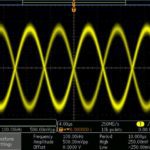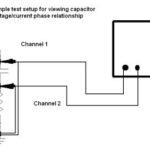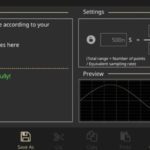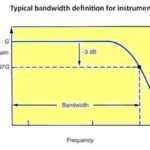There are a variety of instruments available to generate electronic signals these days. They go by different names and provide different kinds of outputs. Differences between the various kinds of instrumentation aren’t always obvious, so here is a short primer.

16 Mpts of arbitrary waveform memory in each channel (128 Mpts optional), up to 256 steps in sequence mode with loop, jump and wait events, a variable sample clock 1 µSa/sec to 2 GSa/sec, and a minimum waveform length of 168 pts with granularity of 1 point.
Signal generators make available at their outputs sinusoidal waveforms with a settable frequency or amplitude. If there are two channels, outputs can also be made to vary in phase. There may be the added option to modulate the signal with a second lower frequency that can be made periodic like an audio tone or non-periodic like the human voice. Additionally, the signal can have a burst inserted like the color burst in TV transmission, or it can sweep between two specified frequencies as provided in a Rigol oscilloscope demo board. Swept signals are perfect for examining circuits whose properties vary with frequency, such as filters and tuned circuits.
They don’t all work the same, but many signal generators are built around a frequency synthesizer, which produces sinewaves at precise frequencies, accurate to a 10 μ/sec resolution. The device is based on a quartz-crystal oscillator, rubidium frequency standard, or GPS-derived oscillator.
Function generators go beyond signal generators in that they allow the generation of periodic standard functions such as sine, square, triangle, ramp up/down, dc, and noise. Arbitrary function generators (AFGs) refer to function generators able to generate a periodic, user-defined waveform.
The arbitrary waveform generator (AWG) differs from an AFG in that it is more complex with additional bells and whistles. In a nutshell, AWGs can generate a user-defined waveform of any size, unlike an AFG which can only generate a custom periodic waveform. AWGs operating in arbitrary waveform mode only generate each sample of the waveform that is stored in memory. AWGs are limited in the frequency precision they can realize, particularly at high frequencies.
Capabilities vary among manufacturers, but generally, AWGs are expensive instruments. Because of their digital nature and multiple (more than two) channels, some AWGs have the ability to generate utility-type polyphase sine waves, useful in designing three-phase equipment. Some models also permit users to capture and store waveforms from a number of digital oscilloscopes and from various real-time sources. Other models can output digital words on a multi-bit connector, integrating into these instruments some functions of a pattern generator.
The functions and waveforms that come out of AFGs and AWGs might be considered patterns, but these instruments generally aren’t considered pattern generators. Back in the days of analog TV, pattern generators were instruments that generated test patterns used for checking the video portion of the TV circuit. Today, however, a pattern generator is an instrument that generates a user-defined pattern of digital logic high/low signals or pulses.

Most digital pattern generators contain several channels. Each channel can individually be programmed to generate a desired sequence of digital signals. The programmed signal or the pattern is stored in a buffer memory and clocked out at a user-defined sampling rate. The applications for pattern generators range from generating a single channel square wave to reproducing digital protocols such as SPI, and multi-channel complex patterns.

Finally, pulse generators produce adjustable rate, width, amplitude, polarity, rise-time and decay pulses in frequencies topping out in the gigabit range. Of course, the pulses they produce are basically square waves. To complicate matters, pulse generators are sometimes called pattern generators.
The key qualities that distinguish modern-day pulse generators from other types of square-wave-generating instruments are accuracy and resolution. Whereas AWGs have a limited frequency precision, consider the specs for a 100 MHz universal pulse generator from Berkeley Nucleonics Corp. The firm’s base Model 6040 can generate pulses down to 3 nsec wide with a resolution of 1 nsec or five digits, an accuracy of 0.2%, with a jitter of 25 psec or 0.005%. This instrument also has options that allow it to deliver pulse rise times of 150 psec with a minimum pulse width of 1 nsec.





Leave a Reply
You must be logged in to post a comment.